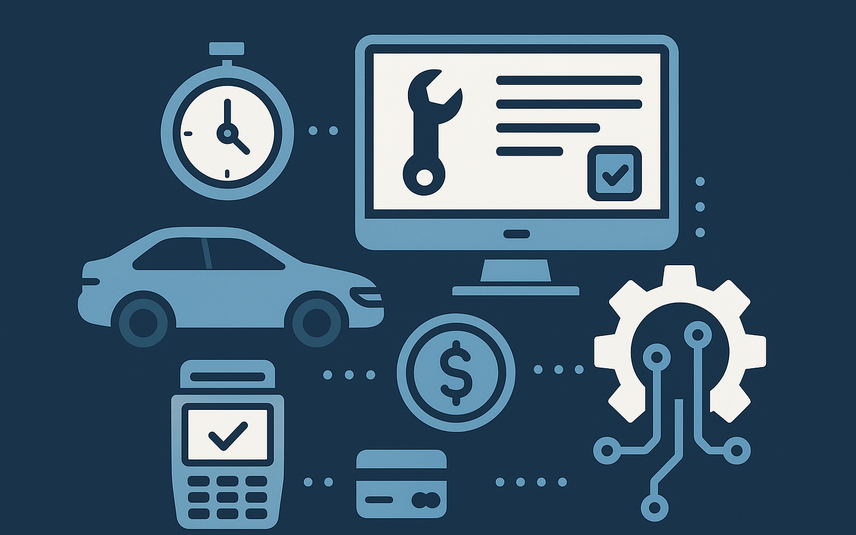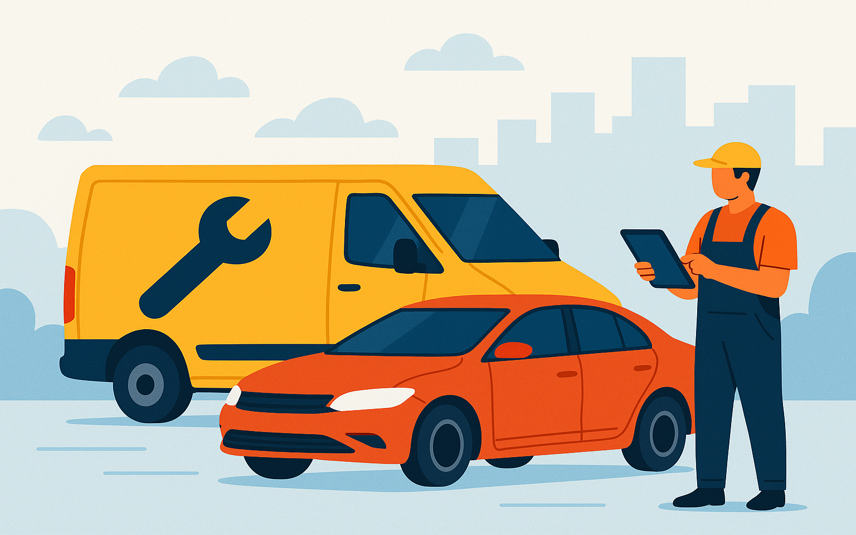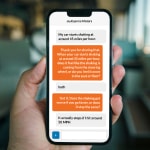Dealership Service Software: What Matters, What Doesn’t, and What Actually Moves Hours Sold
In every dealership, the service lane keeps the lights on. But when it comes to technology, most teams still evaluate “dealership service software” more on feature lists than outcomes. The truth? The tools that move revenue don’t just organize data—they help accelerate decisions. This post breaks down what dealership service software should do, where legacy […]

In every dealership, the service lane keeps the lights on. But when it comes to technology, most teams still evaluate “dealership service software” more on feature lists than outcomes. The truth? The tools that move revenue don’t just organize data—they help accelerate decisions.
This post breaks down what dealership service software should do, where legacy systems fall short, and which capabilities actually drive more hours sold by reducing friction in the customer journey.
The Core Purpose: Turning Cycle Time Into Revenue
Service revenue isn’t won in accounting—it’s won in minutes saved. Every delay between check-in, diagnosis, approval, and payment adds up to lost throughput. Modern dealership service software isn’t about managing records; it’s about eliminating wait states.
So, the goal isn’t just to digitize. The goal is to compress time.
When you look at top-performing dealerships, they share one obsession: how quickly they can get to “yes?” Every second counts, whether it’s gaining customer approval, accelerating advisor response, or payment completion.
What Dealership Service Software Does Well (and Where It Stops)
A traditional DMS or repair-order tool handles the basics:
- Customer and vehicle recordkeeping
- Repair order creation
- Parts and labor tracking
- Accounting integration
- Warranty documentation
These are essential—but they don’t drive incremental revenue. They record transactions after the value has already been created.
Where these systems fail is precisely where modern fixed ops leaders are now investing: the interaction layer.
The Modern Standard: Service Software Built for Interaction
A modern service platform needs to move from passive recordkeeping to active workflow management. That means replacing manual follow-ups with structured, automated engagement that keeps ROs moving.
Here are the core capabilities that matter most:
1. AI-Powered Intake
Traditional appointment forms don’t collect the real customer story.
AI-driven pre-diagnostic intake—like myKaarma’s Service Pre-Diag—asks intelligent follow-ups, allows photo/video uploads, and gives advisors context before the vehicle arrives.
The result? Shorter check-in times, fewer “re-interviews,” and faster dispatch.
2. Omnichannel Communication
Phone calls, texts, and emails should live in a single thread tied to the RO.
Customers shouldn’t have to repeat themselves, and advisors shouldn’t hunt for notes.
Every message—automated or human—belongs in one place.
3. Instant Approvals
This is the metric that moves hours sold.
Digital estimates with one-tap approval let customers authorize work the instant they see it.
No phone tag. No voicemail delays. Just faster “yes.”
4. Integrated Payments
Text-to-pay and stored card options eliminate end-of-day chaos.
Customers pay when it’s convenient for them, and dealerships see faster cash flow with fewer bottlenecks at pickup.
5. Performance Analytics
Advisors can’t improve what they can’t see.
Leaderboards showing time-to-first-response, approval rate, and sold hours per RO create accountability and coaching opportunities.
6. Bi-Directional DMS Sync
Software should never force double entry.
A clean integration keeps the DMS as the ledger while your service platform manages speed and communication.
What Doesn’t Move the Needle
There’s a lot of noise in the market.
Here are three common “shiny object” features that sound impressive—but rarely change the P&L:
- Complex dashboards without action: Reports that describe the past instead of directing the next move.
- Overdesigned UI skins: A modern look doesn’t make a slow workflow faster.
- Generic CRM bolt-ons: Sales CRMs weren’t built for service communication—they’re outbound by design, not conversational.
The difference between cool software and profitable software is whether it helps an advisor close the loop faster.
Why Cycle Time Is the Ultimate KPI
Cycle time connects every operational metric you care about:
- Faster approvals → shorter RO aging → more throughput
- Shorter cycle → higher CSI → better retention
- Higher retention → predictable recurring revenue
You can’t game this metric.
Either your technology shortens the path from customer concern to technician authorization—or it doesn’t.
Dealerships that embrace this mindset see double-digit gains in sold hours within months, not years.
Real-World Example: From “Phone Tag” to Flow
Starting point:
A two-rooftop group used its DMS and internal email for service communication. Advisors spent 40–50% of their day chasing approvals.
After adopting myKaarma’s Service Platform:
- Pre-Diag captured customer concerns automatically during booking
- Digital estimates replaced voicemail approvals
- Text-to-pay cleared payments before pickup
- Leaderboards surfaced top performers daily
Results in 90 days:
- 37% faster average approval time
- +11% sold hours per RO
- 20% fewer abandoned authorizations
Those aren’t “efficiency gains.”
They’re revenue gains—driven by software built to accelerate human decisions.
How to Evaluate Dealership Service Software in 2026
When shopping or benchmarking tools, skip the feature checklist. Instead, ask these five questions:
- Does it remove manual effort for advisors?
- Does it accelerate customer decision-making?
- Does it connect to the DMS cleanly, without re-entry?
- Does it produce data that coaches behavior, not just reports activity?
- Can it scale across rooftops without new workflows?
If the answer to even one of those is “no,” that software might digitize—but it won’t modernize.
Where myKaarma Fits
myKaarma’s platform extends your existing DMS to handle everything the ledger can’t:
- AI-Driven Pre-Diag: Captures context before arrival
- Service Concierge: Answers and routes calls, books appointments, and filters noise
- Scheduler+: Aligns appointments with technician capacity, not arbitrary time slots
- Video + Approvals: Makes upsells visual and frictionless
- Text-to-Pay: Speeds checkout and cash flow
- Analytics: Turns daily performance into actionable coaching
Together, these tools let advisors and customers communicate faster, decide faster, and close ROs faster—all while keeping the DMS as the authoritative system of record.
Conclusion
Dealership service software doesn’t need to do everything.
It needs to do the right things—eliminate re-entry, automate the repeatable, and shorten every approval cycle.
Because in fixed ops, speed equals revenue.
And the systems that win aren’t the ones with the longest feature list—they’re the ones that make “yes” happen sooner.





